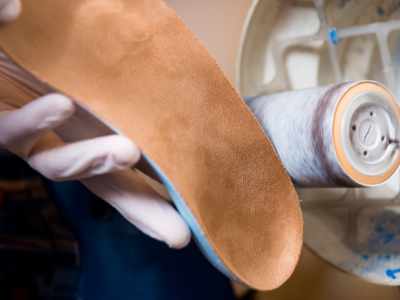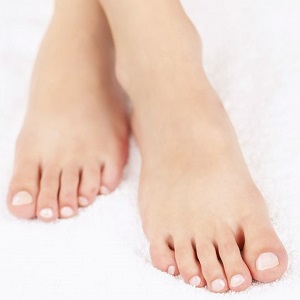Who Cares for Feet – Podiatrists, Pedorthists or Pedicurists?
 What is a Podiatrist, Pedorthist, and Pedicurist. They all look after feet in some way. Do you have foot pain, a problem with toenails, or some dry skin on your heels? But which one should you choose to manage your foot problem? What are the differences between them? Training, qualifications, certifications, and scope of practice differ significantly. Interestingly, there can be some crossover between the foot issues that they attend to. If you have a foot problem, finding the right person can be confusing. Finding the wrong person can be expensive, a waste of time, or at worst, downright dangerous. Use our chart to match foot conditions with the right foot carer. We are here to help you decide whether you need a Podiatrist, Pedorthist, or Pedicurist.
What is a Podiatrist, Pedorthist, and Pedicurist. They all look after feet in some way. Do you have foot pain, a problem with toenails, or some dry skin on your heels? But which one should you choose to manage your foot problem? What are the differences between them? Training, qualifications, certifications, and scope of practice differ significantly. Interestingly, there can be some crossover between the foot issues that they attend to. If you have a foot problem, finding the right person can be confusing. Finding the wrong person can be expensive, a waste of time, or at worst, downright dangerous. Use our chart to match foot conditions with the right foot carer. We are here to help you decide whether you need a Podiatrist, Pedorthist, or Pedicurist.
Podiatrist, Pedorthist, Pedicurist Definitions
Podiatrists assess, diagnose, and treat disorders and injuries of the foot, ankle, and lower extremity using medical and surgical interventions. Pedorthists manage and treat conditions of the foot, ankle, and lower limb using footwear and orthotic interventions. Pedicurists provide cosmetic treatment for feet and nails. This may include washing and massaging feet as well as removing rough skin, cutting and painting toenails.
Podiatrist, Pedorthist, Pedicurist Qualifications
The training of the three foot care provider groups in America helps to differentiate their areas of expertise. Podiatrists hold a Bachelor’s Degree, then a Doctor of Podiatric Medicine (DPM) degree[4 years] then specialized medical and surgical training [2-3 years] in care of the lower extremity . Pedorthists hold a High school diploma, GED, or College degree. The Accredited Pedorthist Program [3-4 weeks] plus 1000 hours supervised practical experience, then the Certification Examination. Many Pedicurists undergo “on-the-job” training only. However, to be a State Licensed Pedicurist, training is required – High School Diploma, State-approved Cosmetology or Nail Technician program, then State licensing exam
What can they do?
The depth of training of a Podiatrist results in a wide range of competencies. Orthopedic surgery, nail surgery, paediatrics and developmental biomechanics, sports biomechanics, medication prescription, ordering xrays and other radiology, ordering pathology and other blood testing, local anesthesia, knowledge of whole of body anatomy and physiology, dermatology and skin conditions.
Pedorthists are sometimes the hidden heroes of foot care. Footwear modification and construction, and orthotic fabrication and modification are science and art rolled into one. Working with foot deformity, leg length discrepancy, pressure areas on different parts of the feet, conteracting the pressures of body weight and the loss of toes are part of the skillset of a Pedorthist.
The role of a Pedicurist may seem a little trivial when compared to Podiatrists and Pedorthists. I think this is unkind. If you have ever damaged your back or been 9 months pregnant you will know just how hard it can be to perform basic footcare on your own feet. A simple pedicure is not always about indulgence and pink nail polish. For many, it is a vital part of their regular health care. Foot washing and nail care on people without complicated underlying health issues, can be a life saver of comfort and self esteem.
Sub Specialties and Workplaces
Podiatrists have the broadest scope of practice and as a result, several sub-specialties have emerged over the last 50 years. While some Podiatrists remain generalists and work across patient and treatment groups, it is not uncommon for a Podiatrist to specialise in Pediatrics (children), High Risk Foot (Diabetes, Rheumatoid Arthritis), Sports (athletes and injuries) and Podiatric Surgery (Bones). Workplaces vary from hospitals, public clinics and private consulting rooms. There is a very dedicated group of Nurse Practitioners in Portland and a group of Podiatrists in Australia who provide footcare services to homeless people. At the time of writing, we have been unable to find American Podiatrists doing this.
Crossover Areas
Podiatrists and Pedicurists both have a role to play with the care of hard skin and nails and footcare advice. The choice of which is usually determined by individual foot structure, skin condition and underlying medical conditions. Podiatrists and Pedorthists both know biomechanics, foot orthoses and footwear. A podiatrist and a Pedorthist working together is ideal.
Comparison Table of Podiatrists, Pedorthists and Pedicurists
| Podiatrist | Pedorthist | Pedicurist | |
| Definition | Assess, diagnose and treat disorders and injuries of the foot, ankle and lower extremity | Manage and treat conditions of foot, ankle and lower limb | Cosmetic treatment for feet and nails |
| Mode of Practice | Medical / Surgical treatment | Fitting, making, and adjusting foot orthotics. Select and modify footwear. | Wash, clean, and massage feet. Remove rough skin. File, paint, and polish toenails |
| Training | Bachelors Degree, then Doctor of Podiatric Medicine (DPM) degree[4 years] then specialized medical and surgical training [2-3 years] in care of the lower extremity | High school diploma, GED, or College degree. The Accredited Pedorthist Program [3-4 weeks] plus 1000 hours supervised practical experience then the Certification Exam. | No training required other than “on-the-job”. However, to be State Licensed training is required – High School Diploma, State approved Cosmetology or Nail Technician program, then State licensing exam |
| Associated Specialties | Surgery, orthopaedics, public health | Orthotics and Prosthetics, | Artificial nails |
| Sub specialties | Pediatrics, dermatology, radiology, geriatrics, diabetic foot | ||
| Work Environment | Private or group practices, hospitals | Specialty shoe stores, patient care facilities, VA facilities, and rehabilitation facilities. | Nail or hair salon |
| Scope |
Orthopedic surgery Biomechanics Nail surgery Medication Prescription Order X-rays Skin penetration Local anesthesia |
Footwear modification and construction Orthotic fabrication and modifcation |
Nail polish and paint Foot massage (not body massage unless separately certified) |
| Cross-Over Areas |
Orthotics Footwear prescription Nail care Callus care |
Orthotics Footwear prescription |
Nail cutting Minor callus care Basic footcare advice |
How to choose between Podiatrists, Pedorthists or Pedicurist
If you have a foot issue, use our simple table above as a guide for your choice of foot care professional. If you are unsure, see a Podiatrist first. Irrespective of who you choose to see, I recommend you ask questions about their qualification, credentials, and licensing. No Licensing – NO DEAL.
Comparison Table of Foot Conditions and who treats which
| Podiatrist | Pedorthist | Pedicurist | |
| Foot Pain | Able to investigate a broad range of causes | May be footwear related |
Nails may be too long
|
| Areas of hard skin | Able to treat all causes on all sites and advise on prevention. | May be friction with footwear. Can modify some footwear | Hard skin removal limited to healthy skin only |
| Unhealed sores on feet | Must be managed by Podiatrist or wound professional. May refer to Pedorthist | Orthotics and footwear modification may be appropriate |
–
|
| Foot Odour | Advice and Over the Counter or Prescription Medicine | May be caused by Footwear materials | – |
| Complex health issues such as Diabetes or Arthritis | Medical training essential | Part of health team approach | – |
| History of Falls | Medical investigation essential | Advice and provision of foot orthotics and appropriate footwear | If bending is difficult but the nails and skin are healthy – Toe nail cutting |
| Can’t find comfortable shoes | Advice | Advice and supply | – |
| Misshapen toes | Potential Surgery | Footwear modification | – |
| Can’t cut toenails | If associated with complex health issues or infected, thickened or ingrown toenails | – | For normal healthy nails |
| Love to wear fashionable open toe shoes | – | – | Nail polish and paint |
Conclusion
Podiatrists, Pedorthists and Pedicurists all have a role to play in the foot health sector. Their qualifications and subsequent scope of practice vary greatly. Choosing who can help you will depend on your particular foot issue and any underlying medical issues you may have. Generally we recommend that if you are uncertain where to start , a Podiatrist is a good starting point.
Further Resources
- American Podiatric Medical Association (Podiatrists)
- American Board for Certification (Pedorthics)
- The Pedorthic Footcare Association (Pedorthists)
- U.S. Bureau of Labor Statistics (Manicurists and Pedicurists)


